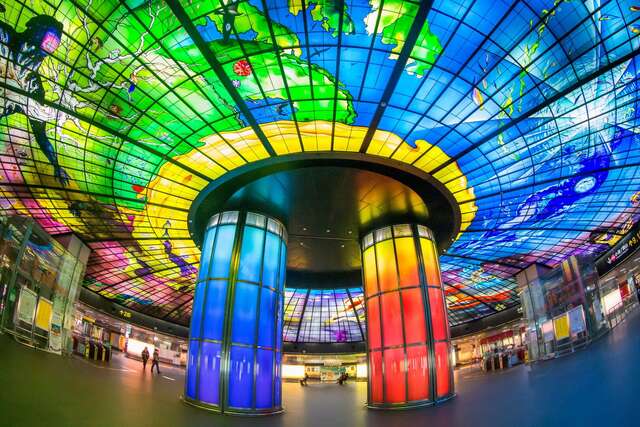Dome of Light - O5R10 Formosa Boulevard Metro Station Introduction
This station is a transfer station where the Taipei MRT (Metro) Red Line and Orange Line intersect, covering a large area with 11 exits. The architecture of the station both inside and out resembles a work of art, featuring four glass curtain wall platform buildings designed by Japanese architect Noboru Takamatsu, symbolizing "prayer" in commemoration of the Kaohsiung Incident that occurred here. The public art installation "Dome of Light" inside the station was created over four and a half years by Italian artist Narcissus Quagliata, combining glass, stained glass, and lighting to represent the birth, growth, glory, and destruction of the universe. It has been ranked as the second most beautiful metro station in the world by the American travel website BootsnAll. The Kaohsiung Incident, which occurred on December 10, 1979 (also known as the Kaohsiung Uprising or the Kaohsiung Violent Incident as termed by the government at the time), involved a peaceful demonstration held in Kaohsiung by the magazine "Formosa" on Human Rights Day, led by figures such as Shih Ming-teh, Lin Yi-hsiung, Annette Lu, Chen Chu, Hsu Hsin-liang, and Huang Hsin-chieh, for the pursuit of human rights in Taiwan, leading to the country's transition from authoritarian rule, the lifting of the ban on political parties, the lifting of martial law, and the opening of freedom of speech, media, and a complete re-election of the legislature.


























